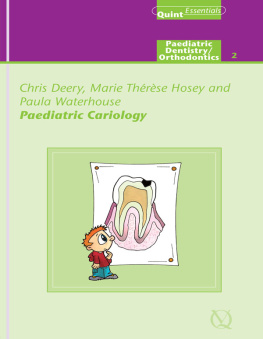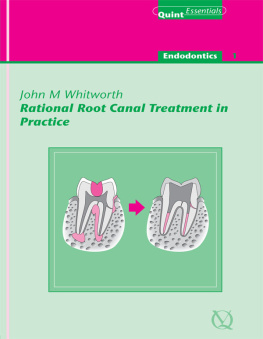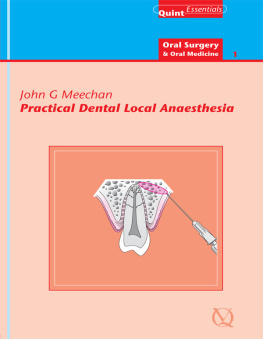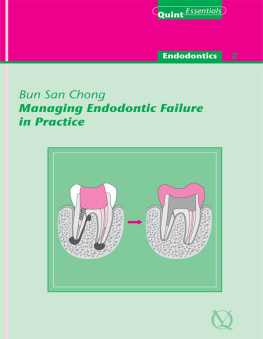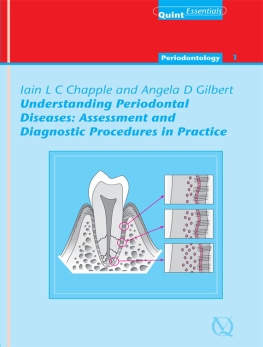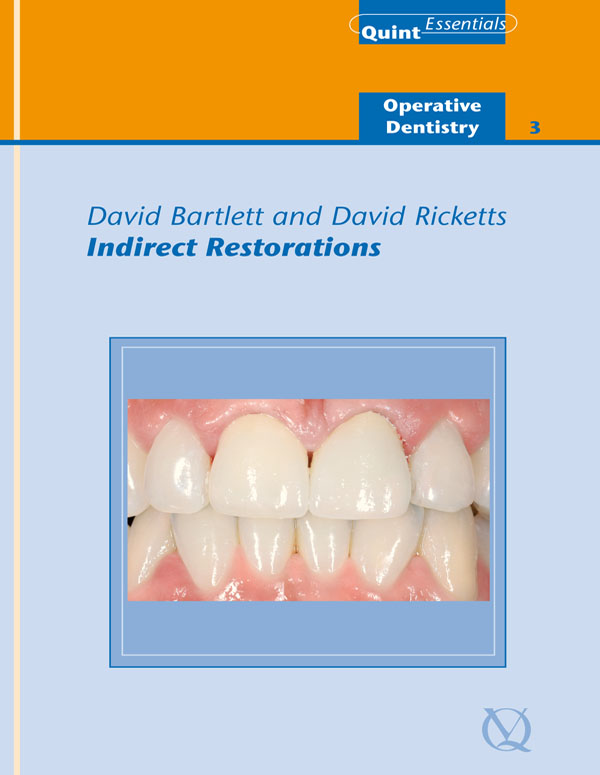
Quintessentials of Dental Practice 25
Operative Dentistry 3
Indirect restorations
Authors:
David Bartlett
David Ricketts
Editors:
Nairn H F Wilson
Paul A Brunton

Quintessence Publishing Co. Ltd.
London, Berlin, Chicago, Paris, Milan, Barcelona, Istanbul, So Paulo, Tokyo, New Delhi, Moscow, Prague, Warsaw
British Library Cataloguing in Publication Data
Bartlett, David
Indirect restorations. - (Quintessentials of dental practice; v. 25)
1. Crowns (Dentistry)
I. Title II. Ricketts, David III. Wilson, Nairn H.F.
617.6922
ISBN: 1850973016
Copyright 2007 Quintessence Publishing Co. Ltd., London
All rights reserved. This book or any part thereof may not be reproduced, stored in a retrieval system, or transmitted inany form or by any means, electronic, mechanical, photocopying, or otherwise, without the written permission of the publisher.
ISBN: 1-85097-301-6
Foreword
The successful provision of indirect restrictions is demanding. A diversity of skills, knowledge and experience are requiredto consistently succeed in this important aspect of clinical practice. Mediocrity in indirect restorations is tantamount toinviting early failure, with the risk of substantial damage to the remaining tooth tissues and the dentition.
Interestingly, failure is the starting point of this latest addition to the Quintessentials series most indirect restorations replacing failed restorations. Against this backdrop, the authors take the reader throughthe indications and the many, varied intricacies integral to the provision of successful indirect restorations. The text,as has come to be expected of new volumes in the popular Quintessentials series, is generously illustrated and peppered with invaluable tips and guidance, tempered by the authors special interestsand expertise in the field.
As indicated by the authors in their Preface, this book is not intended to be a comprehensive tome; it is a succinct texthighlighting key considerations, knowledge and understanding for the busy practitioner, let alone the student wishing to avoidinformation overload. Once read, this book should not be put aside, but placed together with other Quintessentials volumes and similar books for ready reference and guidance.
Hopefully, this book will give clinicians new insight and pointers to enhanced success, if not excellence in indirect restorations.This is a handsome, easy-to-read book, promoting a modern evidence-based approach to indirect restorations.
Congratulations to the authors for a job well done.
Nairn Wilson
Editor-in-Chief
Preface
This book is written to guide practitioners and students in the restoration of teeth by means of indirect restorations. Manywell written textbooks on this subject already exist. This volume is not intended to be a definitive work; by contrast, itis an overview of key points and issues critical to success with indirect restorations. We have not included conventionaland minimal preparation bridgework as there are other books in the Quintessentials series covering these topics. But many of the principles in this book can be applied to these areas.
On reading this book the reader will be able to:
Plan indirect restorations taking into consideration the importance of previous caries experience. The reasons for placingindirect restorations will be reappraised.
Consider and review the indications for indirect full and partial coverage crowns.
Appreciate how to place reliable and retentive cores.
Consider what factors are important when choosing the type of crown and how to select the best materials to use.
The book also:
Describes the common tooth preparations for crowns and assesses how to achieve the best result.
Describes how to take a shade, make provisional restorations, record impressions and explains the value of taking interocclusalrecords.
Considers aspects of occlusion and explains the relevance of occlusal consideration in the provision of indirect restorations.
Reviews the problems associated with short clinical crowns and how to manage them.
Describes when and how to use an articulator.
David Bartlett and David Ricketts
London and Dundee
Acknowledgements
David Ricketts would like to express his gratitude to Catherine Burnett for her assistance with the photography in this book.
Both authors would also like to acknowledge the laboratory technicians who made the crowns illustrated in this book.
Chapter 1
Introduction
Aim
To familiarise the reader with planning indirect restorations, taking into consideration the importance of previous dentalhistory. The reasons for placing indirect restorations are reappraised.
Outcome
On reading this chapter the reader will better understand the importance of prevention and maintaining pulp and periodontalhealth in the provision of successful indirect restorations.
Introduction
To the reader, it may seem strange that a text on successful indirect restorations should begin with a chapter discussingfailures. But in terms of success, it is probably the most important subject as many indirect restorations are replacementrestorations. The restorative cycle, once established, will continue unless lessons are learnt from failure events. This chapterwill consider the:
failure of direct and indirect restorations
maintenance of pulp health
importance of periodontal health
importance of pulp vitality.
Why Indirect Restorations?
Most indirect restorations are placed to restore the contour, function and appearance of teeth previously restored with plasticrestorations. In restoring broken down or damaged teeth with plastic restorations, it is sometimes difficult to achieve appropriatecontact areas (Fig 1-1) and occlusal form (Fig 1-2). Indirect restorations such as crowns, onlays and inlays enable the contactareas and the occlusal form to be controlled in the laboratory. The majority of extensive restorations are placed becauseof primary caries, or caries adjacent to existing restorations. Others will be placed following a fracture of tooth tissue,classically a cusp fracture associated with an occlusoproximal restoration (Fig 1-3). Relatively few extensive restorationsare placed as a consequence of trauma.
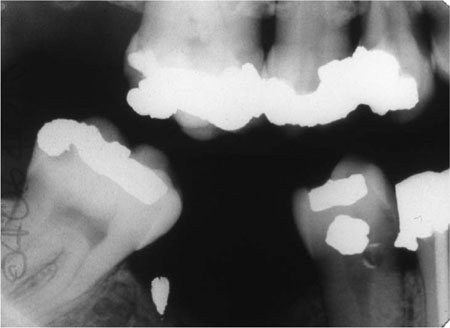
Fig 1-1 Bitewing radiograph showing a ledge on the amalgam restoration in the LR4. This occurred as the LR4 has an extensive defect,making it difficult to develop a tight contact area while keeping the matrix band adapted cervically.
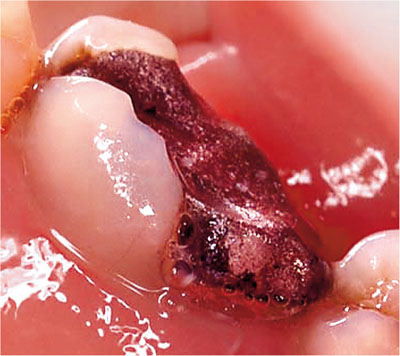
Fig 1-2 Given the extent of this cavity, it is difficult to place an amalgam restoration with adequate occlusal contour.
Next page

